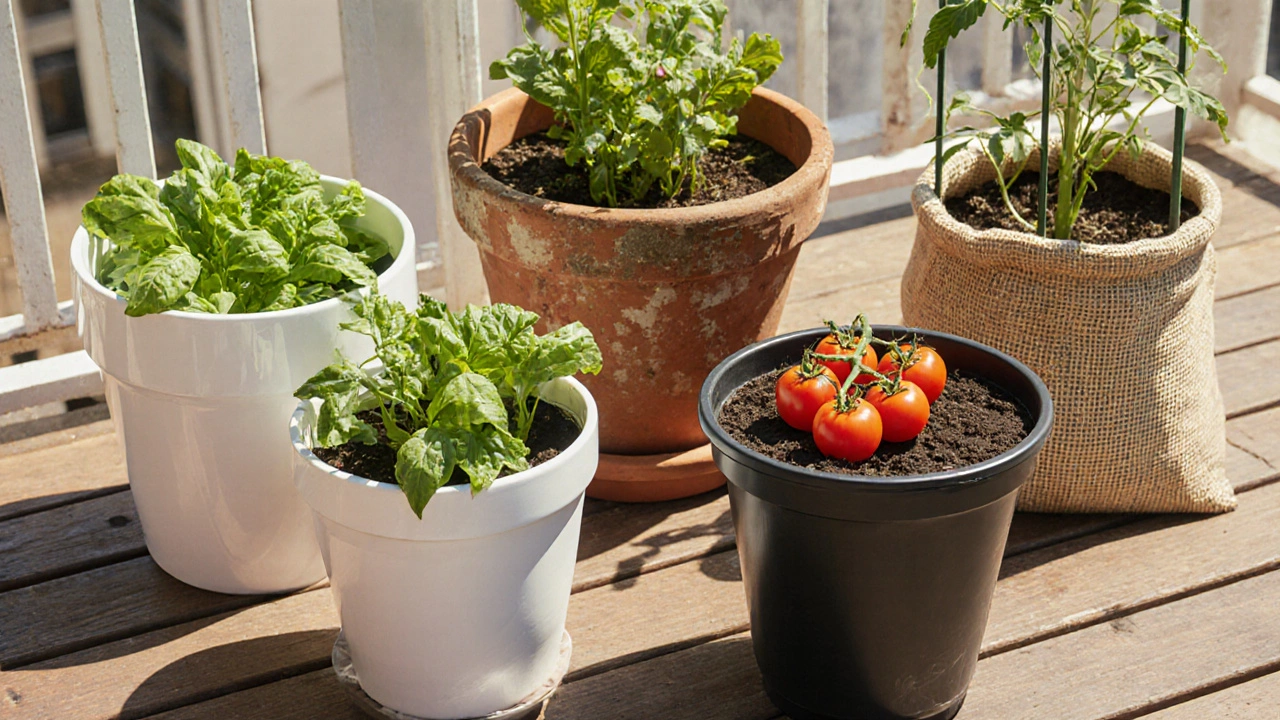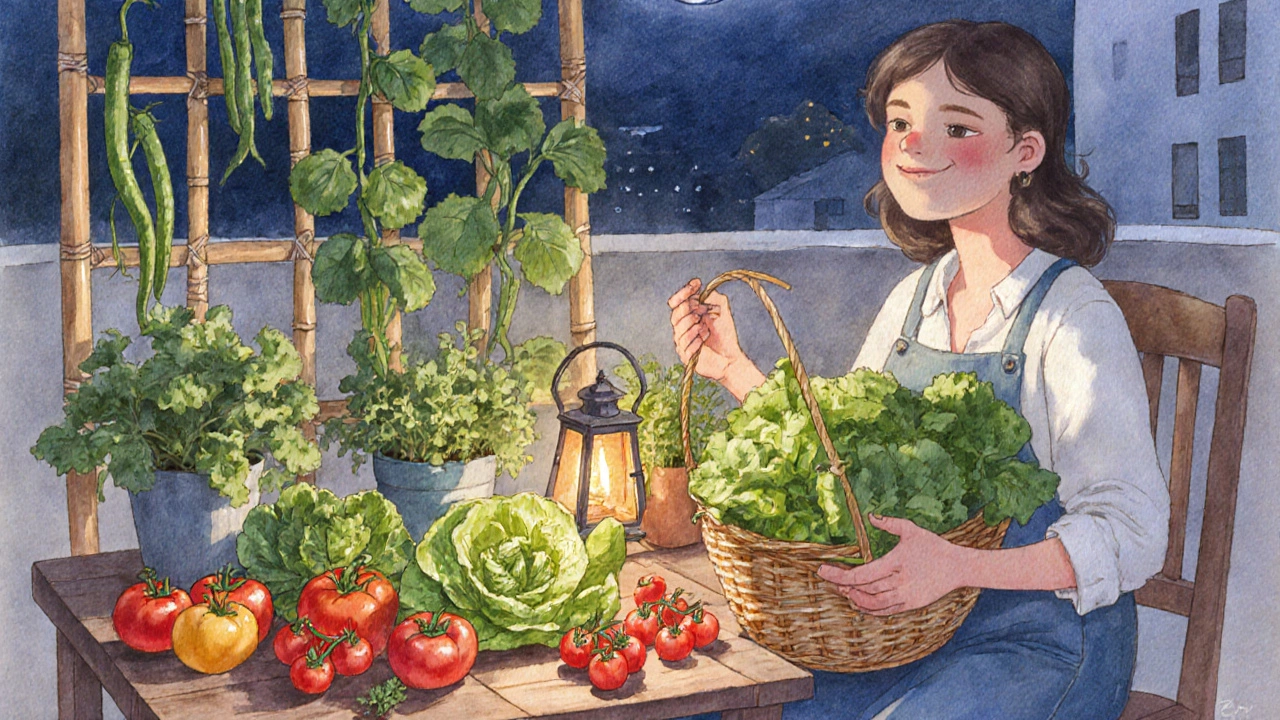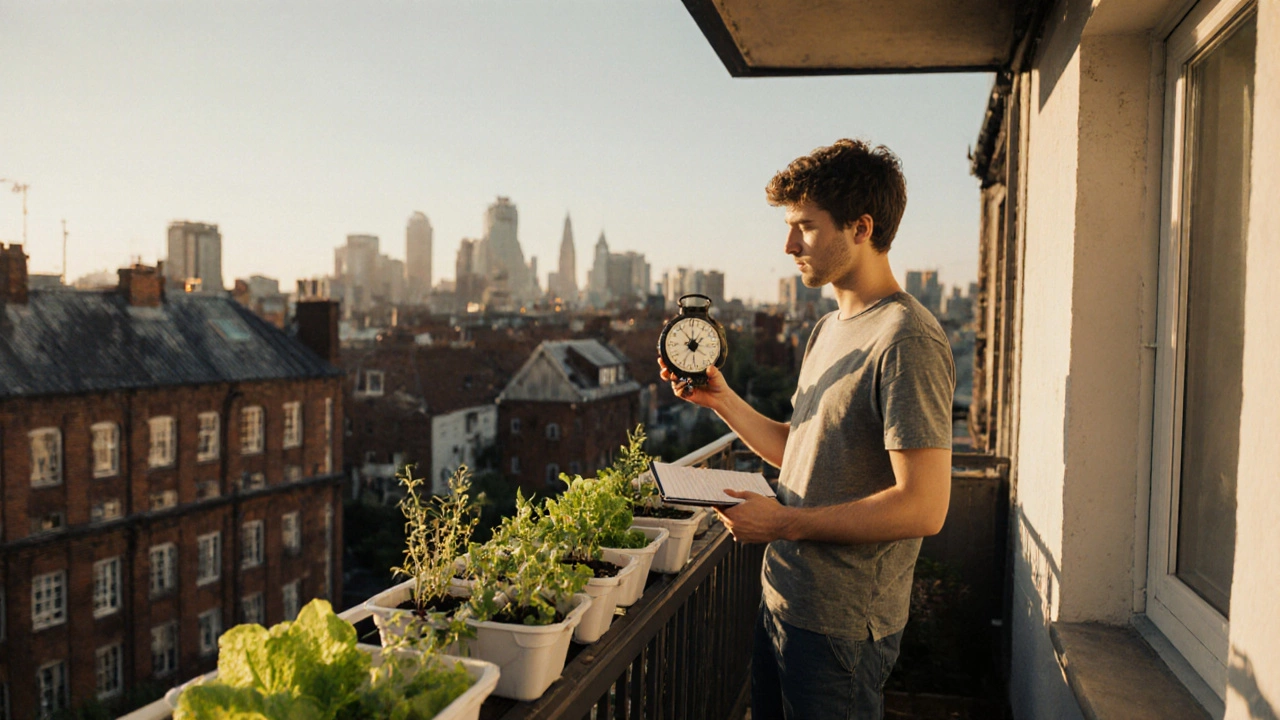Balcony Veggie Suitability Calculator
Assess Your Balcony Conditions
Answer two simple questions to see which vegetables will thrive on your balcony.
When you look out over your Manchester balcony and wonder if you can grow fresh produce, the answer is a resounding yes. Balcony vegetable garden is a compact, container‑based system that lets you grow edible plants where floor space is at a premium. With a bit of planning, the right containers, and a few smart tricks, you can turn a modest railing into a year‑round source of salad greens, herbs, and even small fruiting crops.
1. Check Your Space and Sunlight
The first job is to figure out whether your balcony gets enough light. Most vegetables need at least 5‑6 hours of direct sunshine daily. Use a simple tally: stand on your balcony at 10 am and again at 2 pm, noting how many hours the sun shines directly on the rail. If you only get 3‑4 hours, focus on shade‑tolerant greens like lettuce, spinach, and kale.
Orientation matters too. South‑facing balconies in the UK capture the most light, while east‑ or west‑facing spots can work if you choose fast‑growing, sun‑hungry varieties that will finish before the afternoon shade hits.
2. Pick the Right Containers
Container gardening is the backbone of any balcony vegetable garden. Choose containers that match the root depth of your chosen crops. For leafy greens, a 6‑inch deep pot is enough; for tomatoes or peppers, aim for at least 12‑inch depth.
Here’s a quick visual comparison of the most common container types:
| Material | Weight | Water Retention | Durability |
|---|---|---|---|
| Plastic | Light | Medium | 5‑7 years |
| Terracotta | Heavy | Low | 3‑5 years |
| Fabric Grow‑Bag | Very Light | High (good aeration) | 2‑3 years |
| Self‑watering | Medium | High (reservoir) | 5‑10 years |
If you’re worried about weight on a shared‑use balcony, lightweight plastic or fabric grow‑bags are safest. For a more classic look, terracotta adds charm but needs more frequent watering.
3. Choose a Quality Potting Mix
Good soil is the secret sauce of happy plants. Potting mix for balconies should be lightweight, well‑draining, and rich in organic matter. A reliable recipe is 1 part compost, 1 part coconut coir, and 1 part perlite. This blend holds enough moisture for leafy greens while letting excess water escape-preventing root rot.
Add a slow‑release organic fertilizer (e.g., a 14‑14‑14 blend) at planting time, then top up with a liquid feed every two weeks during active growth.
4. Pick Veggies That Thrive in Small Spaces
Not every vegetable is balcony‑friendly. Here are the top performers for UK climates:
- Lettuce & salad mixes - fast, shade‑tolerant, and ready to harvest in 4‑6 weeks.
- Spinach - loves cooler temperatures; sow in early spring or autumn.
- Radishes - tiny roots, quick turnover, perfect for deep‑soil‑free containers.
- Cherry tomatoes - choose dwarf or patio varieties; they need staking or a small trellis.
- Peppers (sweet or hot) - compact bushes, love warm sun.
- Herbs like basil, parsley, and mint - most do well in 4‑inch pots.
For vertical space, grow beans, peas, or dwarf cucumbers on a vertical trellis. A simple wooden ladder or a purpose‑built netting system can add several feet of growing area without sacrificing floor space.

5. Manage Sun, Wind, and Temperature
Balconies can be windy. Install a windbreak with a lightweight bamboo screen or a row of tall potted shrubs. This shields delicate seedlings and reduces moisture loss.
During a UK summer heatwave, move containers to a shaded spot in the afternoon or use a reflective sheet underneath pots to keep roots cool.
In cooler months, cover pots with horticultural fleece to trap heat and extend the growing season for hardy greens.
6. Set Up an Efficient Watering System
Consistent moisture is crucial, especially in containers that dry out fast. Self‑watering containers with a built‑in reservoir can cut watering time by half. If you prefer standard pots, a drip‑irrigation kit with a timer delivers a steady trickle, preventing both over‑ and under‑watering.
For a low‑tech approach, place a saucer under each pot and fill it every evening; the soil will draw water up through capillary action.
7. Companion Planting and Pest Control
Good neighbors help each other. Plant marigolds or nasturtiums beside lettuce to deter aphids, and intermix garlic with tomatoes to repel spider mites. These natural allies reduce the need for chemical sprays.
If pests appear, start with a gentle soap spray (one teaspoon of dish soap per litre of water) applied early in the morning. For persistent problems, a neem oil spray works well on both foliage and soil‑borne insects.

8. Create a Simple Maintenance Calendar
Sticking to a routine keeps your balcony garden productive:
- Weekly: Check soil moisture, prune dead leaves, and harvest mature greens.
- Bi‑weekly: Apply liquid fertilizer, inspect for pests, and rotate crops if you have multiple containers.
- Monthly: Flush containers with clean water to prevent salt buildup, and replace any cracked pots.
- Seasonal: Switch from warm‑season crops (tomatoes, peppers) to cool‑season greens (spinach, kale) as the weather changes.
By following this cadence, you’ll enjoy a steady supply of fresh produce from spring through autumn, and even a winter harvest of hardy varieties.
9. Harvesting Tips for Maximum Flavor
Pick lettuce leaves when they’re about 4‑6 inches tall for the best texture. For tomatoes, wait until the fruit is fully colored but still firm; a gentle twist will release the fruit without bruising. Regular harvesting encourages plants to produce more, so don’t wait until the produce is over‑ripe.
10. Troubleshooting Common Problems
Problem: Soil dries out in a day.
Fix: Add a layer of mulch (e.g., shredded bark) on top of the potting mix, or switch to a self‑watering container.
Problem: Yellowing leaves on lettuce.
Fix: Likely a nitrogen deficiency-top dress with compost tea or a balanced organic fertilizer.
Problem: Stunted tomato vines.
Fix: Ensure the pot is at least 12 inches deep and provide a sturdy stake or cage; also check that the plant receives at least 6 hours of sun.
Can I grow root vegetables like carrots on a balcony?
Yes, but choose short, round varieties such as ‘Nantes’ or ‘Thumbelina’ and use deep containers (12‑15 inches). Loosen the potting mix and keep it moist for even germination.
How often should I fertilize my balcony garden?
Apply a slow‑release organic fertilizer at planting, then feed with a liquid sea‑weed solution every two weeks during active growth.
What’s the best way to protect pots from freezing in winter?
Wrap pots in horticultural fleece or bubble wrap and move them against a sheltered wall. Adding a layer of straw on top of the soil helps insulate roots.
Do I need a separate trellis for beans, or can I use a balcony railing?
A sturdy wire netting or a small wooden ladder works well as a DIY trellis. Secure it to the railing with zip ties, ensuring it can bear the weight of mature beans.
Can I reuse the same potting mix year after year?
It’s better to refresh at least half of the mix each season. Add fresh compost and perlite to restore structure and nutrient balance.

